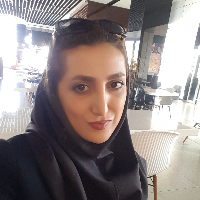Topic selection for health technology assessment: An approach combining multiple attribute decision making and decision rules
Various studies have used multiple attribute decision making (MADM) techniques to assess and rank health technologies. The goal of the present study was to prioritize health technologies using various techniques of MADMs in combination with decision rules.
The study is an applied research using multi-attribute decision making (MADM) methods. This study extracted the attributes related to health technology assessment from global literature and experts’ opinions. In this study, two different types of experts were consulted: the first type, including three experts in the field of the decision-making techniques, on the subject of setting priority on health focusing on MADM; and the second one consists of seven experts in the field of HTA, asked about the selection of attributes and determination their importance. Candidate health technologies were individually weighted and ranked using TOPSIS, SAW and VIKOR by the weight and decision matrix. The results obtained from various techniques were combined and ranked using Copeland’s technique to obtain the final ranking of health technologies. To determine HTA type reports, decision rules were defined. All models were designed via MS Excel.
This study chose eight technologies according to six tradeoff attributes. These attributes included health benefits at the population level, vulnerable population size, availability of alternative technologies, budget impact, financial protection, and quality of evidence. Their exact weights were 0.25, 0.121, 0.146, 0.132, 0.167 and 0.181, respectively. Also, safety and uncertainty about the cost-effectiveness were considered as the veto and decision rules respectively. Copeland’s method was therefore used to combine the methods Whereas HT2 (The technology for treating patients suffering from varicose) was ranked the highest priority and HT3 (The palliative method for patients who suffer from various cancers) was ranked the lowest (for preventing from any ethical issue, the exact name of each technology wasn’t mentioned).
Finally, in accordance with decision rules which are based on various conditions of “uncertainty about the cost-effectiveness”, it is recommended that full health technology assessment report be performed on three technologies, rapid health technology assessment report be performed on four others, and, finally no prioritizing for health technology assessment be made on one of them.
-
An investigation of Health System Reforms in Upper-Middle-Income Countries in Response to COVID-19 Pandemic: A Systematic Review
Ali Mehrabi Bahar *, Amirhossein Takian, Mohammad Arab, Ali Akbar Haghdoost, , Ahad Bakhtiyari
Iranian Red Crescent Medical Journal, Dec 2024 -
Evaluation of the Effects of Air Pollution on Hospitalization and Death Due to Corona Crisis in Tehran
Alireza Nazarian, Zahra Abedi*, Amir Ashkan Nasiri Pour, Alireza Haji Seyed Mirza Hoseini
Journal of Disaster Prevention and Management Knowledge, Spring 2025 -
The New Model of Prioritizing Orphan Drugs: The Case Study for Hemophilia, SMA, CF and MS
Marita Mohammadshahi, Zahra Gharib-Naseri, Mohammadreza Mobinizadeh, Zeinab Fakoorfard, Farhad Hosseinzadeh Lotfi, Hamid Sharafi, Parisa Abooee, Ali Akbari Sari,
Shiraz Emedical Journal, Jan 2025 -
Can SMA Innovative Treatments Be Reimbursed? A Rapid Review
Fateme Yaftian, Mohammadreza Mobinizadeh, , Efat Mohamadi, Farhad Habibi
Iranian Journal of Pediatrics, Oct 2024 -
Estimation of the total costs and per capita package of family physician services in Fars and Mazandaran provinces in 2023
Pejman Hamouzadeh, Mani Yousefvand, Efat Mohamadi, Sahar Kargar, Mahboobeh Golestani, Farbod Rahnamai Chitsaz, Abolfazl Behjoo, Serajaddin Gray, Alireza Olyaee Manesh*
Journal of Medical Council of Iran, -
The Effect of the New Service Package of Integrated Healthy Child Care on the Health Indicators of Children in Tuiserkan City
M .Maniei, A.A .Nasiripour, M.Riahifar
Journal of Health,


